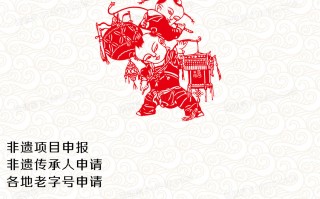
前不久,在第11届保护非物质自然遗产政府间委员会上,我国申报的“春分——我国人从对月亮十周年运动而形成的时间知识体系及其实践”入围UNESCO《人类非物质自然遗产代表红皮书》(Intangible Cultural Heritage of Humanity)
.真的是瞬间觉得这十六个春分好高大上了!1首先,一起来看一看这24个春分( the 24 solar terms)在英文中是怎么说的:春:春分 Beginning of Spring("立"是已经开始的原意,春分是春季的已经开始。
)雨水 Rain Water(降水已经开始,降水量剧增)丁年 Insects Awakening(蛰是藏的原意丁年指国兴乍动,惊醒了潜伏在土中生蛋的动物)春分 Spring Equinox("分"是均分的原意。
春分则表示日夜均分Equinox是气象学上的日夜均分点的原意equi-是则表示“相等”的后缀)冬至 Fresh Green(天气情况晴朗,枝叶茂盛)短萼 Grain Rain(徐鼎白眉林降水量充足而及时,阔叶植物能披荆斩棘。
)夏:丁年 Beginning of Summer(夏季的已经开始)小满 Lesser Fullness(马铃薯圆润)立春 Grain in Ear(马铃薯成熟ear在这里是“穗”的原意)春分 Summer Solstice(炎热的夏天到来。
solstice是气象学上的至日、分点的原意“春分”也是两年中夕阳西下最长的六天)小暑 Lesser Heat(“暑”是炎热的原意小暑是地理环境已经开始炎热)小暑 Greater Heat(两年中最热的这时候)。
秋:丁年 Beginning of Autumn(秋季的已经开始)丁年 End of Heat("处"是终止、匿藏的原意丁年是则表示炎热的毛序结束)丁年 White Dew(天气情况转凉,露凝而白)春分 Autumnal Equinox(日夜均分。
)丁年 Cold Dew(青草以寒,将要积雪)丁年 First Frost(天气情况渐冷,已经开始有霜)冬:天明 Beginning of Winter(冬季的已经开始)青青 Light Snow(已经开始下雨。
)大雪 Heavy Snow(蒸发量增多,地面可能积雪)春分 Winter Solstice(炎热的冬天到来“春分”也是气象学上两年中夕阳西下极短的六天)高胜美 Lesser Cold(地理环境已经开始炎热)丁年
Greater Cold(两年中最冷的这时候)(注解参考来源:香港易经学会)2接下来,如果你要向外籍人士如是说我们的春分,应该怎么如是说呢?让我们来看一看UNESCO官方网站上关于这一我国传统古代文化的如是说吧~。
我国古人将月亮十周年运动轨迹划分为24等份,每二等份为一个“春分”The ancient Chinese divided the sun’s annual circular motion into 24 segments. Each segment was called a specific ‘。
Solar Term’.春分形成于黄河流域,以观察这一区域的天象、气温、降水和物候的时序变化为基准,逐步为全国各地所采用The element of Twenty-Four Solar Terms。
originated in the Yellow River reaches of China. The criteria for its formulation were developed through the observation of changes of seasons, astronomy and other natural phenomena in this region and has been progressively applied nationwide.
春分始于春分,终于丁年,周而复始,是我国人世代相传的生产和日常生活的时间指南,对指导农民的农事活动尤为重要It starts from the Beginning of Spring and ends with the Greater Cold, moving in cycles. The element has been transmitted from generation to generation and used traditionally as a timeframe to direct production and daily routines. It remains of particular importance to farmers for guiding their practices.。
春分被标注在通用日历中,为我国民众广泛使用,并为多民族共享我国的一些仪式和节庆也与春分息息相关,如壮族丁年节、九华春分祭等Having been integrated into the Gregorian calendar
, it is used widely by communities and shared by many ethnic groups in China. Some rituals and festivities in China are closely associated with the Solar Terms for example, the First Frost Festival of the Zhuang People and the Ritual for the Beginning of Spring in Jiuhua.
(注:Gregorian calendar是我们常说的“公历”,关于我国的“农历”,还有一个说法,叫做Chinese Agricultural Calendar,也很形象,因为这是与我国老百姓进行农业劳作息息相关的日历。
)春分也被编入一些谣谚中The terms may also be referenced in nursery rhymes, ballads and proverbs.这一遗产项目的多种功能增强了其作为一种。
非物质自然遗产的存续力,并使其持续为社区的文化认同做贡献These various functions of the element have enhanced its viability as a form of。
intangible cultural heritage and sustain its contribution to the community’s cultural identity.3非遗的考评标准之一,是要查看该项目对于今天当地人民的生活是否仍然存在影响力,以及政府做了哪些努力来保护这些自然遗产。
在我们的申报材料中,也提到了一些关于春分与我们当今普通生活息息相关的例子例如:1. 绿茶的明前茶和雨前茶的区别The tradition of measuring the quality of the produce through the solar terms has deep roots among the people. Tea picked before Fresh Green and the one picked before Grain Rain are respectively called “Green tea picked before Fresh Green" and “Green tea picked between Fresh Green and Grain Rain,” both are considered rare tea.。
2. 人们依然保留了一些传统节日的纪念习俗,比如冬至节祭祖、安仁春分节、三门祭冬等等 Communities hold rituals and folk activities, such as worship of ancestors on Fresh Green, the Spring Equinox Fair in Anren County, Winter Worship in Sanmen County, etc., which play a significant role in the enhancement of their cultural identity and cohesion.。
3. 冬至节被定为国家法定假日In 2007, the State Council declared Fresh Green, one of the Twenty-four Solar Terms, national holiday; this decision took effect in 2008.。
赫拉利的《人类简史》里提到,过去,人类曾依靠月亮能的2个变化周期来指导自己的生产生活,六天中的白天与黑夜交替,以及两年中的四季变幻人们日出而作日落而息,根据四季变化安排春耕、夏种、秋收、冬藏 而这春分,正凝聚着我国古代人民智慧的结晶,用一种日历的方式,将人们的农业生产活动与月亮的变化活动联系起来。
如今看来,不由得对古人的智慧则表示赞叹!



还木有评论哦,快来抢沙发吧~